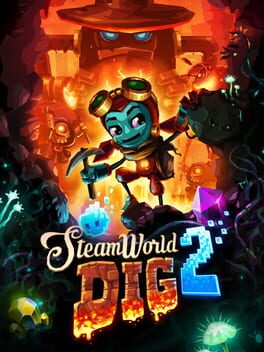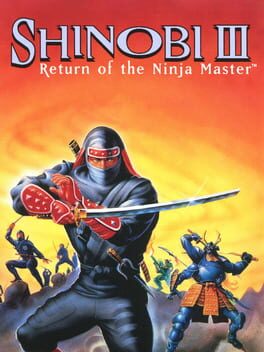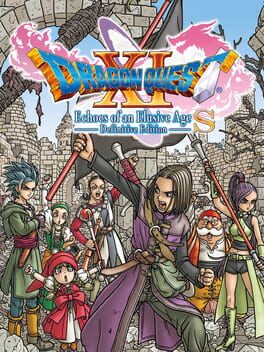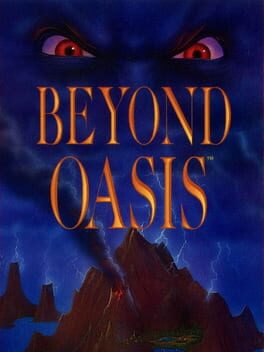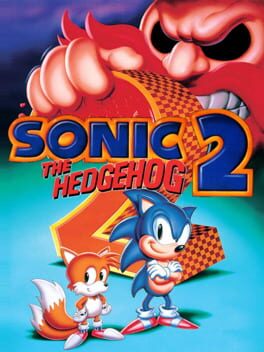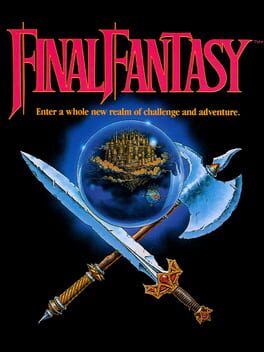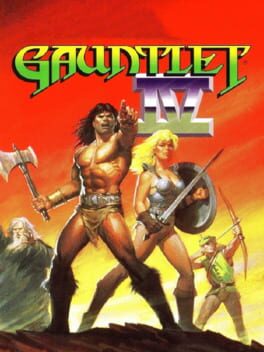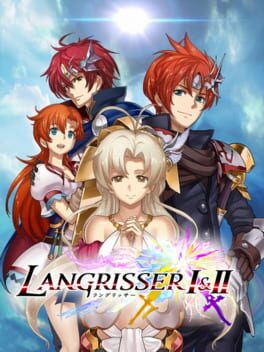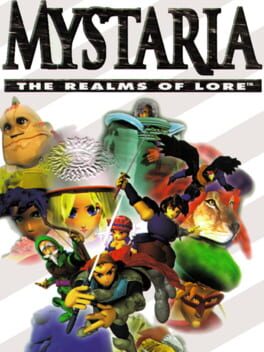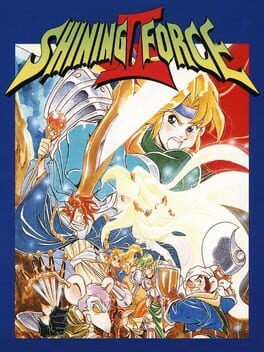GhaleonEB
BACKER
Blossom Tales is a charming Zelda-like with a lot of personality. The framing device is a grandpa telling his kids a bedtime story, and his narrative pops in and out of the story throughout. Even better, the kids will argue about what happens in the story - what kind of boss are you about to run into? What kind of puzzle is up next? And rather than be cosmetic, we get to choose which kids' idea grandpa goes with in the story - which shapes what we do next. It's not transformational, but it's a really neat way to integrate the story into the gameplay.
This is, unfortunately, one of the only really original ideas in the game. If you've played a 2D Zelda (or even another Zelda-like), then all of this will be familiar. Get four heart pieces to add a heart to the health meter; park bombs on cracked walls to break them open; get the bow and arrow for range combat and dungeon puzzle solving. It's all very familiar, but done well and with a lovely art style.
Wanted to mention the music in particular as a standout - Josie Brechner's score is a superb chiptune accompaniment to the game, often richly atmospheric (the frost zone them is incredible) and always setting a great mood for the dungeons and areas.
With some more original ideas I think this would have been more interesting, but it's a solid little game regardless.
This is, unfortunately, one of the only really original ideas in the game. If you've played a 2D Zelda (or even another Zelda-like), then all of this will be familiar. Get four heart pieces to add a heart to the health meter; park bombs on cracked walls to break them open; get the bow and arrow for range combat and dungeon puzzle solving. It's all very familiar, but done well and with a lovely art style.
Wanted to mention the music in particular as a standout - Josie Brechner's score is a superb chiptune accompaniment to the game, often richly atmospheric (the frost zone them is incredible) and always setting a great mood for the dungeons and areas.
With some more original ideas I think this would have been more interesting, but it's a solid little game regardless.
2017
SteamWorld Dig 2 is the ideal sequel: It takes every idea in the first game and improves or expands on them, while keeping the core that made the original so fun intact. The digging feels better, the action is faster and more satisfying, movement is better, the world is MUCH larger, and the worldbuilding and story are both richly improved.
Essentially a mining game fused with a metroidvania, there's as much action and platforming this time around as digging, but integrated in a way that feels more natural than the first game. The story is stand-alone enough to be played without playing the first SteamWorld Dig, but if you have then the returning characters and the ways this story ties into the original are a treat.
I love the steampunk western setting and the breezy, atmospheric vibe the score sets: it's a world that is fun to hang out in, and even more fun to explore. I've replayed this game several times now, and will do so several more times. Really hoping we get a third entry.
Essentially a mining game fused with a metroidvania, there's as much action and platforming this time around as digging, but integrated in a way that feels more natural than the first game. The story is stand-alone enough to be played without playing the first SteamWorld Dig, but if you have then the returning characters and the ways this story ties into the original are a treat.
I love the steampunk western setting and the breezy, atmospheric vibe the score sets: it's a world that is fun to hang out in, and even more fun to explore. I've replayed this game several times now, and will do so several more times. Really hoping we get a third entry.
2018
I was quite moved by this game, even though I probably did not fully understand it. There's an emotional resonance in the stunning art design that meshed well with the themes on meditations on grief and regret.
I thought GRIS took a little too long to get interesting - bit too much walking straight - and was occasionally frustrated by pushing forward before I intended, leaving optional objectives behind with no way to return. But other than those issues, this was a beautiful and emotional puzzle game.
I thought GRIS took a little too long to get interesting - bit too much walking straight - and was occasionally frustrated by pushing forward before I intended, leaving optional objectives behind with no way to return. But other than those issues, this was a beautiful and emotional puzzle game.
Shinobi III is one of the best action games on the Genesis and still the best game in the very good Shinobi series. Everything clicks - the controls are tight and once mastered allow for precision movement. Which is good, because by the end of the game, precision movement is required. The move set is greatly expanded from Revenge of Shinobi. Musashi can sprint now, enabling speedy travel through levels and a way to quickly close the distance on enemies, capped with a lunging attack. Jump kicks, wall jumps, clinging to and clambering across ceilings - these actions once mastered enable us to flow through levels in style, and it feels amazing to not just overcome the challenges of the game, but doing so with style and a flourish.
The graphics are exceptional, with excellent animation for all characters and enemies, good effects work and clear, well detailed environmental and character designs. Every level is given depth through some of the most extensive parallax on the Genesis. The soundtrack is somehow up to the task of following Yuzo Koshiro's legendary work in Revenge of Shinobi, with a widely varied score spanning tracks that are slower and atmospheric when it suits the level to straight up rock (the jet ski sequences). Every track is great, and I still listen to this OST regularly all these years later.
But the true star here is the level design: every stage introduces new ideas and challenges, and they slowly make increasing use of verticality and require exploration in order to progress. Each presents several initial opportunities to make use of moves like wall climbing to get a feel for it before later requiring it to both advance and find secrets. Pure action stages on horseback or the aforementioned jet ski break up the longer levels, and the game climaxes in a pair of long and very intense platforming stages that epitomize the 'tough but fair' game design, making the game incredibly salifying to clear. Everything from the health and ammo systems to the abundance of secret stashes of supplies is tuned to walk that line.
This was my favorite Genesis action game when I was a kid, and probably my most replayed game ever. Playing it again for the first time in many years, I was struck at how well it holds up. Solid game design never ages. This game simply rocks.
Played on Genesis mini.
The graphics are exceptional, with excellent animation for all characters and enemies, good effects work and clear, well detailed environmental and character designs. Every level is given depth through some of the most extensive parallax on the Genesis. The soundtrack is somehow up to the task of following Yuzo Koshiro's legendary work in Revenge of Shinobi, with a widely varied score spanning tracks that are slower and atmospheric when it suits the level to straight up rock (the jet ski sequences). Every track is great, and I still listen to this OST regularly all these years later.
But the true star here is the level design: every stage introduces new ideas and challenges, and they slowly make increasing use of verticality and require exploration in order to progress. Each presents several initial opportunities to make use of moves like wall climbing to get a feel for it before later requiring it to both advance and find secrets. Pure action stages on horseback or the aforementioned jet ski break up the longer levels, and the game climaxes in a pair of long and very intense platforming stages that epitomize the 'tough but fair' game design, making the game incredibly salifying to clear. Everything from the health and ammo systems to the abundance of secret stashes of supplies is tuned to walk that line.
This was my favorite Genesis action game when I was a kid, and probably my most replayed game ever. Playing it again for the first time in many years, I was struck at how well it holds up. Solid game design never ages. This game simply rocks.
Played on Genesis mini.
I played this game some time ago. and much of it has stayed with me. I loved every main character, their individual story arcs, and how they pulled together into a team. Sylvanado and Jade and Veronica were my favorites, but they'll all so great.
I love old school turn-based combat and DQXI has a perfect implementation, keeping it simple while layering on interesting systems that encourage different party mixes and strategies. Crafting is similarly deceptively simple, and ultimately very satisfying (and important!). Every game system is well thought out and realized, and ties into the whole seamlessly.
I could say more about the story (incredible) or the setting (memorable and fun to explore), or the characters (vividly realized) but in the end, this is basically a perfect RPG, where everything works. I loved it.
Played on retro mode (2D pixel art), through to the end credits. Did not play the epilogue as I was satisfied with the conclusion.
I love old school turn-based combat and DQXI has a perfect implementation, keeping it simple while layering on interesting systems that encourage different party mixes and strategies. Crafting is similarly deceptively simple, and ultimately very satisfying (and important!). Every game system is well thought out and realized, and ties into the whole seamlessly.
I could say more about the story (incredible) or the setting (memorable and fun to explore), or the characters (vividly realized) but in the end, this is basically a perfect RPG, where everything works. I loved it.
Played on retro mode (2D pixel art), through to the end credits. Did not play the epilogue as I was satisfied with the conclusion.
1994
Beyond Oasis is the answer to the question, what if the developers of Streets of Rage 2 made a top-down action-RGP? Ancient's vibrant, decidedly unique adventure as clever as it is unusual, and it's those aspects that make it hold up so well decades later.
Wielding spirits as companions, weapons, puzzle keys and as tools to progress through the world and gain resources is a remarkable feat of game design. As with the early Zelda games, there are secrets packed into every inch of the game, and he solutions are often very clever, requiring keen observation, experimentation or both.
The combat design is very Streets of Rage 2, as would be expected from Ancient. Combos, power moves, an abundance of weapons and the freedom to deal with your enemies with the tools of your preference make each encounter a lot of fun. On the downside, movement can be clunky at times when it needs to be precise. Bosses are tough and unique, capping dungeons that range from the humble water shrine to sprawling mazes.
The music is divisive, and is the aspect that has probably aged the worst, but it's a unique use of the Genesis synth and one that suits the tone of the game well. All in all this is a gem and one I love revisiting.
Played on Genesis Mini.
Wielding spirits as companions, weapons, puzzle keys and as tools to progress through the world and gain resources is a remarkable feat of game design. As with the early Zelda games, there are secrets packed into every inch of the game, and he solutions are often very clever, requiring keen observation, experimentation or both.
The combat design is very Streets of Rage 2, as would be expected from Ancient. Combos, power moves, an abundance of weapons and the freedom to deal with your enemies with the tools of your preference make each encounter a lot of fun. On the downside, movement can be clunky at times when it needs to be precise. Bosses are tough and unique, capping dungeons that range from the humble water shrine to sprawling mazes.
The music is divisive, and is the aspect that has probably aged the worst, but it's a unique use of the Genesis synth and one that suits the tone of the game well. All in all this is a gem and one I love revisiting.
Played on Genesis Mini.
2018
I didn't think I could beat Celeste. I'm not that great with tough platformers, and Celeste is a tough platformer. But here's the thing: Celeste wanted me to beat it. It told me I was good enough, encouraged me to learn from every one of my (thousands of) deaths, and to keep trying. In the end, the game was right. I could do it, and reaching the apex of the mountain made me so happy.
I love these characters. I love the soundtrack. I love that the game lifted me up every time I fell down. In a very meta-way, Celeste the game became my own Celeste mountain to clear, something I did because it was there and I NEEDED to do it. Celeste is one of the best fusions of theme, story, character and game design ever made.
I love these characters. I love the soundtrack. I love that the game lifted me up every time I fell down. In a very meta-way, Celeste the game became my own Celeste mountain to clear, something I did because it was there and I NEEDED to do it. Celeste is one of the best fusions of theme, story, character and game design ever made.
On paper, this is a pretty typical metroidvania: start out with basic movement and abilities, get a handful of upgrades - yes, there's a crucial double-jump - and overcome obstacles to find new areas, clear out dungeons and their bosses, and then, um find Teddy. There's the retro pixel art style, simple backgrounds, and mysterious world with secrets to uncover.
In execution, Finding Teddy 2 is a special game. It has an ethereal, odd tone about it throughout, with lots of space in the audio for silence and ambiance. It refuses to explain itself: you get items, but are not told what to do with them. Figuring out mechanics, story and where to go next is never spoon-fed to the player. Even understanding basic mechanics requires keen observation of the environmental details.
Beneath all that opaqueness, there is a whimsy fluttering along the edges. Some decidedly comic characters are found in dire straits, for instance. And there are some terrific mechanics, such as the crucial musical tone system and how that can lead to multiple discoveries.
I plan to revisit this one soon; it left a lasting impression on me.
In execution, Finding Teddy 2 is a special game. It has an ethereal, odd tone about it throughout, with lots of space in the audio for silence and ambiance. It refuses to explain itself: you get items, but are not told what to do with them. Figuring out mechanics, story and where to go next is never spoon-fed to the player. Even understanding basic mechanics requires keen observation of the environmental details.
Beneath all that opaqueness, there is a whimsy fluttering along the edges. Some decidedly comic characters are found in dire straits, for instance. And there are some terrific mechanics, such as the crucial musical tone system and how that can lead to multiple discoveries.
I plan to revisit this one soon; it left a lasting impression on me.
1992
Revisiting Sonic 2 after a couple decades, I'm once again struck by how this is both a perfect sequel and a conservative one. There's been a huge expansion in level variety over the first game, reimagined (but not necessarily better) bonus modes, tons of new ideas in the stage designs, a great new sidekick (Tails rules) and a soundtrack that somehow tops the legendary original.
On the flip side, there's only one new move (the now-iconic spin dash), zero new power ups, and gameplay that is only subtlety - those smartly - refined. And the traumatizing drowning music is still there, so that's a half star gone right there.
Otherwise, yeah, this is a stunning platformer and still a reference point for how to make a great sequel: do everything the original did, only bigger and better, and don't screw up anything it did well.
Played on Genesis mini.
On the flip side, there's only one new move (the now-iconic spin dash), zero new power ups, and gameplay that is only subtlety - those smartly - refined. And the traumatizing drowning music is still there, so that's a half star gone right there.
Otherwise, yeah, this is a stunning platformer and still a reference point for how to make a great sequel: do everything the original did, only bigger and better, and don't screw up anything it did well.
Played on Genesis mini.
1987
Figured the best way to start playing the Final Fantasy games was to start at the beginning. I was struck by the ambition: the story and game mechanics, for the time, are really something (even if some aspects of the story went over my head thanks to the poor translation). It was neat to see the foundation of so many tropes established, most of which can't touch on without getting into spoilers. The basic turn-based combat is great, and the distinct character classes added a lot to it.
I'd probably rate this higher if I had played it back on release and had a better understanding of the impact, as well as some nostalgia for it. But as it was, the first Final Fantasy was still a very solid, fun RPG that surprised me in many ways. Look forward to replaying it as the recently released pixel remaster.
Played on NES Classic mini console.
I'd probably rate this higher if I had played it back on release and had a better understanding of the impact, as well as some nostalgia for it. But as it was, the first Final Fantasy was still a very solid, fun RPG that surprised me in many ways. Look forward to replaying it as the recently released pixel remaster.
Played on NES Classic mini console.
1994
Earthbound is a delightful twist on the JRPG formula: it's got all the mechanics and tropes of the usually fantasy-set RPG, but centered around a group of kids decidedly rooted in the mundane, on earth.
All the usual mechanics and concepts are grounded, some through simple renaming, some through new execution: Save points? You use phone to call your dad, and he writs down what you've done so far. Speaking of your dad, while you earn money for battles, you don't get it then. You gotta call dad back in town, who deposits the money in your bank; then you hit the ATM to collect it. On the more cosmetic front, magic is renamed Psi. But really, it's MP.
The stuff I didn't care for: in battle, there is laterally zero character animation in the entire game. Instead you fight static sprites against wildly mode-7 distorted backgrounds. In shifting the character animation to the background we do get some variety, but I found it distracting and difficult to even look at sometimes. The inventory system is very stingy, forcing constant management with storage and/or drops along the way. And the game leans very heavily on status effects, with a long list of ailments some of which, early on, are so debilitating they force you back to town to heal. This happens a LOT.
Also be warned: Earthbound is extremely grindy. I spent hours grinding in very small areas for hours in order to progress, at several points in the story. I didn't mind much - I'm okay with grinding - but it's not for everyone. Lastly, the dungeons are all disappointing, most are small and linear with just a couple of forks. The game's emphasis is elsewhere.
Against these quibbles is a great set of characters, beautiful massive towns (that we spend a large proportion of the game in), some neat innovations in the combat mechanics, a sometimes great OST (minus the battle music), a story that keeps turning up fun surprises and is filled with imagination, and one of the best party member introductions ever.
This is a charming, often tough RPG with a terrifically realized setting and lots of great ideas.
Played to completion on SNES Classic.
All the usual mechanics and concepts are grounded, some through simple renaming, some through new execution: Save points? You use phone to call your dad, and he writs down what you've done so far. Speaking of your dad, while you earn money for battles, you don't get it then. You gotta call dad back in town, who deposits the money in your bank; then you hit the ATM to collect it. On the more cosmetic front, magic is renamed Psi. But really, it's MP.
The stuff I didn't care for: in battle, there is laterally zero character animation in the entire game. Instead you fight static sprites against wildly mode-7 distorted backgrounds. In shifting the character animation to the background we do get some variety, but I found it distracting and difficult to even look at sometimes. The inventory system is very stingy, forcing constant management with storage and/or drops along the way. And the game leans very heavily on status effects, with a long list of ailments some of which, early on, are so debilitating they force you back to town to heal. This happens a LOT.
Also be warned: Earthbound is extremely grindy. I spent hours grinding in very small areas for hours in order to progress, at several points in the story. I didn't mind much - I'm okay with grinding - but it's not for everyone. Lastly, the dungeons are all disappointing, most are small and linear with just a couple of forks. The game's emphasis is elsewhere.
Against these quibbles is a great set of characters, beautiful massive towns (that we spend a large proportion of the game in), some neat innovations in the combat mechanics, a sometimes great OST (minus the battle music), a story that keeps turning up fun surprises and is filled with imagination, and one of the best party member introductions ever.
This is a charming, often tough RPG with a terrifically realized setting and lots of great ideas.
Played to completion on SNES Classic.
1993
I picked this up at the recommendation of a retro game reviewer I follow, and was not disappointed. The game features several modes, including a perfect port of the arcade version of the original Gauntlet. The mode I played was the main reason I picked it up: the Quest (aka, campaign) which was built just for this version.
On the surface, it's pretty straight forward: clear four towers that are locking the final castle, and then tackle the castle. Each has ten levels of monster and loot-strewn mazes to clear, for fifty levels and five bosses. Gain XP and gold and improve your stats and gear along the way. The home base is just a shop with the entrances to the towers and castle collected, and there's only a handful of items and gear to find along the way.
In execution, the game takes a threadbare premise and makes the most of it by focusing on what matters most: the dungeon designs. From the first tower, it's clear they are deviously designed and often challenging to figure out. You don't clear one level at at time - often you have to enter a level from several different entrances, some from above, some from below, to hit all the secret blocks that clear it out. Clearing stages is rewarded: enemies disappear, and there's a shortcut path on every dungeon so you can zip quickly to the levels you're working on. It creates a sense of progress as each level gets cleared out.
The soundtrack is an absolute stunner, one of the best on the Genesis. Both in composition and in how it uses the Genesis synthesizer, every track is terrific. Walking into the first dungeon and getting hit with this put a big grin on my face: https://www.youtube.com/watch?v=w0-mkukUH5k
On the downside, the stages are lacking in variety. Once you clear the first dungeon, you've seen every enemy and setup the game has to offer. Each of the five dungeons are differentiated by music, monster difficulty, tile palette and different types of trap tiles in each (some slow you down, some cause sliding, etc.). Still, the dungeon designs and music are the star here and kept me going through some very challenging levels, and intense boss fights.
The password system takes a couple minutes on either end of a play session to enter and then write down, but that's retro gaming for you. I did not mind.
All in all I had a blast with this. Clear time for the Quest mode, in single-player, was just over 13 hours.
On the surface, it's pretty straight forward: clear four towers that are locking the final castle, and then tackle the castle. Each has ten levels of monster and loot-strewn mazes to clear, for fifty levels and five bosses. Gain XP and gold and improve your stats and gear along the way. The home base is just a shop with the entrances to the towers and castle collected, and there's only a handful of items and gear to find along the way.
In execution, the game takes a threadbare premise and makes the most of it by focusing on what matters most: the dungeon designs. From the first tower, it's clear they are deviously designed and often challenging to figure out. You don't clear one level at at time - often you have to enter a level from several different entrances, some from above, some from below, to hit all the secret blocks that clear it out. Clearing stages is rewarded: enemies disappear, and there's a shortcut path on every dungeon so you can zip quickly to the levels you're working on. It creates a sense of progress as each level gets cleared out.
The soundtrack is an absolute stunner, one of the best on the Genesis. Both in composition and in how it uses the Genesis synthesizer, every track is terrific. Walking into the first dungeon and getting hit with this put a big grin on my face: https://www.youtube.com/watch?v=w0-mkukUH5k
On the downside, the stages are lacking in variety. Once you clear the first dungeon, you've seen every enemy and setup the game has to offer. Each of the five dungeons are differentiated by music, monster difficulty, tile palette and different types of trap tiles in each (some slow you down, some cause sliding, etc.). Still, the dungeon designs and music are the star here and kept me going through some very challenging levels, and intense boss fights.
The password system takes a couple minutes on either end of a play session to enter and then write down, but that's retro gaming for you. I did not mind.
All in all I had a blast with this. Clear time for the Quest mode, in single-player, was just over 13 hours.
2019
I completed both games in this collection for Switch. Warsong on the Genesis has been on my backlog for a long while - and still is - but I wanted to play both remakes since it may be a while before I went back to the OG for the Genesis (Warsong is Langrisser 1 in NA.)
These are great strategy games with rock-solid game design and progression systems, offering a long series of well crafted battles and many leaders to choose from, each of which has their own upgrade paths. One could play these games several times with different mixes of characters and troupes and have the battles play out differently. From a nuts and bolts gameplay standpoint, I really enjoyed both.
But dear lord, the misogyny in the writing and art is so awful. The men are hulking buff guys in armor with take charge attitudes. The women are reduced to pining after them in clothing barely more than lingerie, begging just to stay by side of their men and not be a burden. In-game, Narm is a raging badass riding and leading dragons into battle. In the story she's deferential, wanting only to please her man while trying not to have her breasts fall out of her barely-there clothing.
I really liked how these games played. I really hated how they treated women. From the art and clearly-new translation, I suspect how the women are handled is a new addition. I'm gonna chase down Warsong on the Genesis and hope it fares better in that department.
These are great strategy games with rock-solid game design and progression systems, offering a long series of well crafted battles and many leaders to choose from, each of which has their own upgrade paths. One could play these games several times with different mixes of characters and troupes and have the battles play out differently. From a nuts and bolts gameplay standpoint, I really enjoyed both.
But dear lord, the misogyny in the writing and art is so awful. The men are hulking buff guys in armor with take charge attitudes. The women are reduced to pining after them in clothing barely more than lingerie, begging just to stay by side of their men and not be a burden. In-game, Narm is a raging badass riding and leading dragons into battle. In the story she's deferential, wanting only to please her man while trying not to have her breasts fall out of her barely-there clothing.
I really liked how these games played. I really hated how they treated women. From the art and clearly-new translation, I suspect how the women are handled is a new addition. I'm gonna chase down Warsong on the Genesis and hope it fares better in that department.
Mystaria is one of the ugliest genuinely great games I've ever played. It's a 3D SRPG with superb battlefield, combat and character ability designs and truly dire visuals.
The story is basic, the overworld small. There's only a couple of towns and they're all narrow first person corridors with a few doors to enter. The polygon graphics are atrocious, with a low frame rate, short draw distance and muddy textures. The character designs sum up everything that went wrong when CG character design suddenly became a thing at the tail end of the prior generation.
But none of that matters, because as an SRPG, it's brilliant. The battlefields make smart use of the 3D terrain and obstacles, and often present several valid ways to approach a conflict. Each layout is unique and takes very good strategy to overcome what are frequently daunting odds. The character abilities are all unique and you can cobble together several different combinations of effective parties that have a pronounced impact on the strategies that should be used. Abilities and stats are surprisingly nuanced and well thought out. Protip: have an effective archer!
And the soundtrack, to put it scientifically, rules. The intro video is a good summation of the game itself: bad visuals and character designs, but the music is ludicrously good and makes up for it all. https://www.youtube.com/watch?v=DQdQXGLHJRM
Loved this when it first came out, and, assuming you can get over the simple plot and bad visuals, Mystaria still holds up very well, as my recent replay confirmed. A very muddy gem on the Saturn.
The story is basic, the overworld small. There's only a couple of towns and they're all narrow first person corridors with a few doors to enter. The polygon graphics are atrocious, with a low frame rate, short draw distance and muddy textures. The character designs sum up everything that went wrong when CG character design suddenly became a thing at the tail end of the prior generation.
But none of that matters, because as an SRPG, it's brilliant. The battlefields make smart use of the 3D terrain and obstacles, and often present several valid ways to approach a conflict. Each layout is unique and takes very good strategy to overcome what are frequently daunting odds. The character abilities are all unique and you can cobble together several different combinations of effective parties that have a pronounced impact on the strategies that should be used. Abilities and stats are surprisingly nuanced and well thought out. Protip: have an effective archer!
And the soundtrack, to put it scientifically, rules. The intro video is a good summation of the game itself: bad visuals and character designs, but the music is ludicrously good and makes up for it all. https://www.youtube.com/watch?v=DQdQXGLHJRM
Loved this when it first came out, and, assuming you can get over the simple plot and bad visuals, Mystaria still holds up very well, as my recent replay confirmed. A very muddy gem on the Saturn.
1993
One of the best SRPG's ever made, Shining Force II takes an "it's not broke" approach to the core strategic battles from the first game, and greatly expands everything else. Unlike the SF1, there's a substantial overworld to explore, to support a greatly expanded story and cast of characters. The overworld, and towns in particular, are packed with secrets to find, including party characters and entire hidden battles.
The playable roster is enormous, ensuring you can choose a wide array of combinations, all of which will affect strategy greatly. Personally, I like a balanced party with a couple of archers, mages and healers supporting the bruisers up front. But even with that as the approach, there's a bunch of characters to pick from.
Every battle is unique and well designed, but the one that left a huge impression on me is the chess battle. You'll know it when it happens. Just brilliant game design and story telling focused into a unique, challenging and memorable battle.
There are a few odd story beats - some characters seem important early and then then stop contributing to the story entirely suddenly - and I wish the battle music didn't restart every time we cut to a character clash in battle. Other than that? I think this is a perfect SRPG and still a high water mark for the genre.
The playable roster is enormous, ensuring you can choose a wide array of combinations, all of which will affect strategy greatly. Personally, I like a balanced party with a couple of archers, mages and healers supporting the bruisers up front. But even with that as the approach, there's a bunch of characters to pick from.
Every battle is unique and well designed, but the one that left a huge impression on me is the chess battle. You'll know it when it happens. Just brilliant game design and story telling focused into a unique, challenging and memorable battle.
There are a few odd story beats - some characters seem important early and then then stop contributing to the story entirely suddenly - and I wish the battle music didn't restart every time we cut to a character clash in battle. Other than that? I think this is a perfect SRPG and still a high water mark for the genre.

